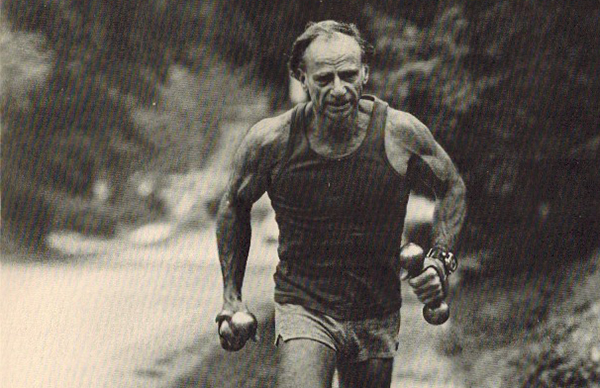
The overarching principle of high-intensity interval training (HIIT) is that the harder you do an exercise, the more physiological benefits you accrue; thus, by incorporating intervals of higher intensity efforts in your workouts, you can get more fitness bang for your buck in less time.
When we think about HIIT, we tend to think about going absolutely nuts on a fan bike or doing all-out sprints.
But as Dr. Martin Gibala explained on the AoM podcast, while high-intensity training rises above the level of the moderate, it doesn’t require a complete max out of your heart rate, nor is it limited to certain exercise modalities.
You can do interval training by pedaling like a madman on a bike, but you can also do it with a less strenuous approach.
Enter Interval Walking Training (IWT), which originated in Japan.
This 3X3 walking workout is simple: you do 3 minutes of low-intensity walking (40% of peak aerobic capacity for walking — a little faster than a stroll), followed by 3 minutes of high-intensity walking (70%+ of peak aerobic capacity for walking). You repeat these interval sets at least 5 times, and do this 30-minute workout 4 times a week.
Your heart rate during the high-intensity intervals will vary according to your fitness level and age. One 68-year-old who participated in an IWT-based study had his heart rate go up to about 130 beats per minute during the fast intervals, so you’re moving at a good clip.
Even though IWT is highly accessible, studies that have been done on it show that it produces significant health benefits. People who did Interval Walking Training 4X a week for 3 months experienced significantly more improvement in their blood pressure, cholesterol, glucose, leg strength, and aerobic capacity than those who did continuous, moderate-intensity walking.
Hiroshi Nose, who developed Interval Walking Training, reports that among those who do IWT, “Physical fitness — maximal aerobic power and thigh muscle strength — increased by about 20 percent which is sure to make you feel about 10 years younger than before training, [and] symptoms of lifestyle-related diseases (hypertension, hyperglycemia, and obesity) decreased by about 20 percent.” IWT walkers enjoyed mental health benefits as well: depression scores dropped by half.
Walking in general is already one of the very best forms of exercise you can do, and IWT just helps you take its benefits up a notch. Hiroshi has used Interval Walking Training to get thousands of elderly Japanese citizens into shape, and it’s a great form of exercise if you’re in the older decades of life. But it’s also good if you’re just beginning your fitness journey and looking to get off the couch and start doing more physical activity. Even if you’re already a regular exerciser who’s in good shape, IWT is a nice way to mix up your usual neighborhood strolls while enhancing your health even further.
For more HIIT protocols, from the accessible to the challenging, listen to this episode of the AoM podcast:







